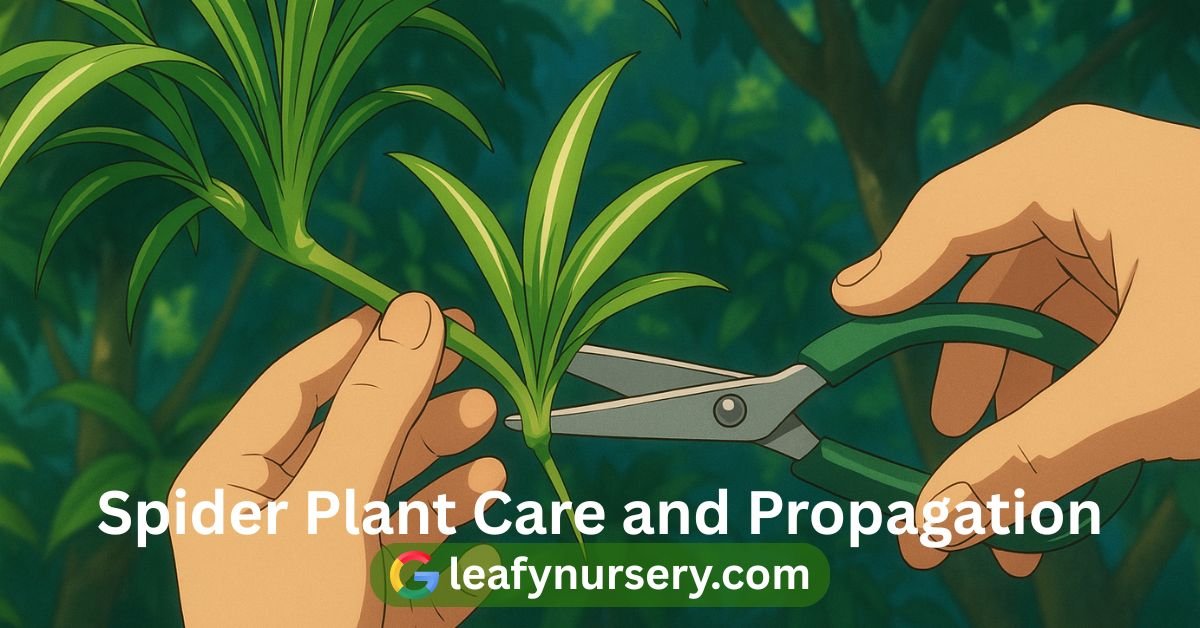Spider plants (Chlorophytum comosum) are a favorite for many plant lovers as spider Plant care is easy, air-purifying benefits, and an attractive appearance. If you’re looking to learn about Spider Plant benefits, how to properly care for them, and how to propagate them, this guide will cover everything you need to know.
Spider Plant Benefits: Why You Need One in Your Home
Spider Plants are not only beautiful but also offer significant health advantages:
- Air Purification: Spider Plants are known for their ability to remove harmful toxins like formaldehyde and xylene from the air.
- Improved Indoor Air Quality: They release oxygen and increase humidity, benefiting respiratory health and skin hydration.
- Interior: Their long, arching green leaves and tiny white flowers add a refreshing touch to any indoor space.
Spider Plant Care: How to Keep Your Plant Thriving
Below is a table summarizing key Spider Plant care tips to ensure your plant remains healthy and vibrant:
| Care Aspect | Recommendation |
| Sunlight | Bright, indirect sunlight. Avoid direct sun to prevent burning for Spider Plant Care. |
| Watering | Water when the top 1-2 inches of soil are dry. Avoid overwatering. |
| Soil | Well-draining, light potting mix (houseplant or cactus mix works best). |
| Temperature | Ideal range: 60-75°F (15-24°C). Avoid placing near cold drafts or heating vents. |
| Humidity | Prefers moderate humidity; mist occasionally in dry environments. |
Spider Plant Propagation: Growing More Plants from Your Spider Plant
Spider Plants are extremely easy to propagate, and the process is simple. The most common method is through offsets or “babies” that grow on long stems.
Spider Plant Propagation from Babies: A Simple Guide
Spider Plant propagation from babies is straightforward:
- Wait for the baby to grow roots: Allow the baby plantlet to develop roots while still attached to the mother plant.
- Separate the baby: Once it has roots, cut the baby off from the parent plant.
- Plant the baby: Place the baby in a small pot with well-draining soil. Water lightly, and place it in a spot with bright, indirect light.
Spider Plant Propagation: Water or Soil—Which Method is Best?
You can propagate Spider Plants in either water or soil. Here’s a comparison to help you choose the best method for your needs:
| Method | Water Propagation | Soil Propagation |
| Pros | Easier to monitor root growth. | Simpler and less likely to cause root rot. |
| Cons | Needs to be transferred to soil after roots form. | May take longer for roots to establish. |
| Process | Submerge the baby plant in water until roots grow, then transfer to soil. | Plant the baby directly into moist, well-draining soil. Keep it humid until roots develop. |
Both methods are effective, so you can choose based on your preference for watching the roots develop (water) or skipping the extra step of transferring to soil (soil).
Conclusion: Growing a Thriving Spider Plant at Home
Spider Plants are easy to care for and provide many benefits, including improved air quality and aesthetic appeal. With their simple propagation methods—whether using water or soil—you can easily multiply your plant collection and share them with friends and family. By following the care tips outlined in this guide, you’ll enjoy a healthy, thriving Spider Plant in your home.



